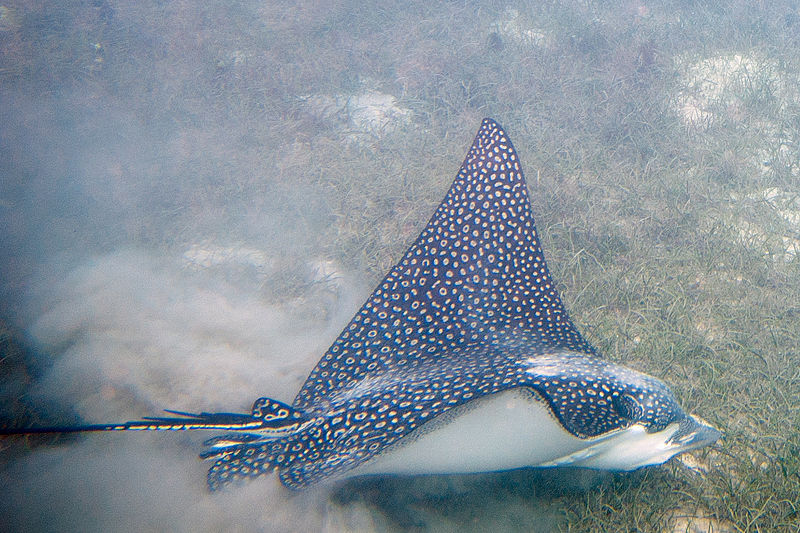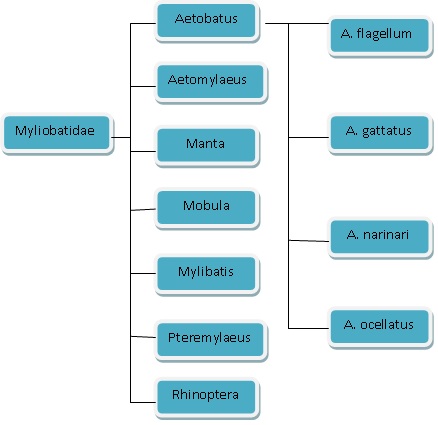Classification
Domain: Eukarya
Kingdom: Animalia
Phylum: Chordata
Class: Chondrichthyes
Order: Myliobatiformes
Family: Myliobatidae
Genus: Aetobatus
Species: Aetobatus narinari
Why is the Spotted Eagle Ray
classified this way?
Domain: Eurkarya
The Spotted Eagle Ray is classified as Eukarya because it has complex cells containing membrane-bound organelles and a nucleus containing DNA which supplies the genetic code that is specific to this organism.
Kingdom: Animalia
Spotted Eagle Rays are classified as Animalia because they are mutlicellular, motile and carry out a gametic life cycle. Other organisms that are part of the Animalia Kingdom are the Eastern Gray Squirrel, Hawaiian Box Jellyfish, the Thorny Devil and Emus.
Phylum: Chordata
The Spotted Eagle Ray falls under the classification of Chordata because they have a notochord, a well-developed coelom, they are dueterostomes (which means they developed an anus before a mouth) and they exhibit bilateral symmetry. Other examples of Chordates include the Little Blue Penguin and Red Fox.

Class: Chondrichthyes
Spotted Eagle Rays, like Southern Stingrays, are part of the Chondrichthyes classification because they are cartilaginous fish that have well-developed jaws. Other examples of Chondrichthyes include skates and sharks, such as The Great White Shark and Whale Sharks.
Order: Myliobatiformes
The Spotted Eagle Ray, similar to the Manta Ray, is classified as a Myliobatiformes because of their flattened body morphology that measures longer in width than in length. The tail is easy to distinguish from the body and includes poisonous barbs (Boschung 2014).
Family: Myliobatidae
Spotted Eagle Rays have the classification of Myliobatidae because they give birth to live young after nourishing them throughout development via a placenta, which stimulated and regulated embryonic growth hormonally (Jonna 2003).
Genus: Aetobatus
The Spotted Eagle Ray is classified as Aetobatus because of the triangular corners of their body and wing-like pectoral fins as well as a snout that appears somewhat duck-billed (Bester).

Species: Aetobatus narinari
Spotted Eagle Rays are classified as Aetobatus narinari because of the coloration on their dorsal side as well as their large wingspan size in comparison to other rays.
<< Go back to our Home page! >>